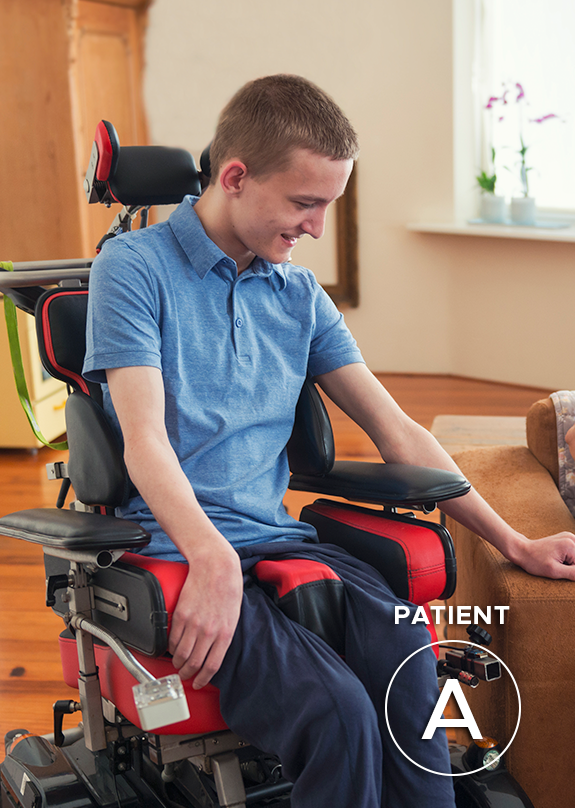Diagnosing Severe Spasticity
In patients presenting with spasticity, a thorough history and physical examination, electromyography, determination of nerve conduction velocities, or imaging studies of the head, neck, and spine may be useful in eliminating treatable causes of increased tone.1
In patients with a known neurologic condition, particularly those known to cause spasticity (ie, brain or spinal cord injury [SCI], multiple sclerosis [MS], cerebral palsy [CP], stroke) a thorough history and physical examination is necessary to rule out triggers that can exacerbate spasticity (eg, medication changes, infections, stress).1
Radiographs are especially important in the insensate patient with SCI or the cognitively impaired patient with brain injury if occult fractures are present. Radiography can also provide evidence of bowel impaction. In addition, other studies, such as laboratory tests (eg, complete blood count [CBC], liver function tests), genetic tests, and culturing of urine, blood, cerebrospinal fluid (CSF) may help to rule out infection or determine differential diagnosis.1

Assessment of spasticity should encompass physical, functional, and quality of life measures that are evaluated by the clinician and reported by the patient and/or their caregiver. This includes identifying which muscles or muscle groups are overactive and determining the effect of spasticity on all aspects of patient function, including mobility and activities of daily living (ADLs). Assessments should include evaluation of tone, mobility, strength, balance, endurance, and the need, if any, for assistive devices, as well as spasticity-related pain and quality of life.2-5
Safety and effectiveness in pediatric patients below the age of 4 have not been established. Lioresal® Intrathecal should be used during pregnancy only if the potential benefit justifies the potential risk to the fetus.
Patients With Severe Spasticity May Present in Different Ways7
-

Patient A
Limited self-mobility with assistive devices; often relies on wheeled mobility, including wheelchairs
-

Patient B
May or may not walk with assistive devices; may have limitations walking outdoors and in the community; some challenges with activities of daily living
-

Patient C
Walks with assistive devices, with mobility becoming increasingly challenging; activities of daily living becoming more difficult
-

Patient D
Walks without restrictions; may have limitations in advanced motor skills, like running or jumping; some noticeable challenges developing with daily activities1
Learn more about assessment of spasticity severity here.
- Sheean G. Chapter 21: Diagnostic evaluation of adult patients with spasticity. In: Brashear A, Elovic E, eds. Spasticity: Diagnosis and Management. 2nd ed. New York, NY: Demos Medical Publishing, LLC, 2016.
- Reeves S, Lambeth K. Chapter 15: The role of physical and occupational therapy in the evaluation and management of spasticity. In: Brashear A, Elovic E, eds. Spasticity: Diagnosis and Management. 2nd ed. New York, NY: Demos Medical Publishing, LLC, 2016.
- Walker HW, Hon AJ, Kirschblum S. Chapter 23: Spasticity due to disease of the spinal cord: pathophysiology, epidemiology, and treatment. In: Brashear A, Elovic E, eds. Spasticity: Diagnosis and Management. 2nd ed. New York, NY: Demos Medical Publishing, LLC, 2016.
- Ivanhoe CB, Durand Sanchez AV. Chapter 4: Ancillary findings associated with spasticity. In: Brashear A, Elovic E, eds. Spasticity: Diagnosis and Management. 2nd ed. New York, NY: Demos Medical Publishing, LLC, 2016.
- Elovic E. Chapter 5: Measurement tools and treatment outcomes in patients with spasticity. In: Brashear A, Elovic E, eds. Spasticity: Diagnosis and Management. 2nd ed. New York, NY: Demos Medical Publishing, LLC, 2016.
- Nair KP, Marsden J. The management of spasticity in adults. BMJ. 2014;349:g4737.
- Saulino M, Ivanhoe CB, McGuire JR, et al. Best practices for intrathecal baclofen therapy: patient selection. Neuromodulation. 2016;19(6):607-615.